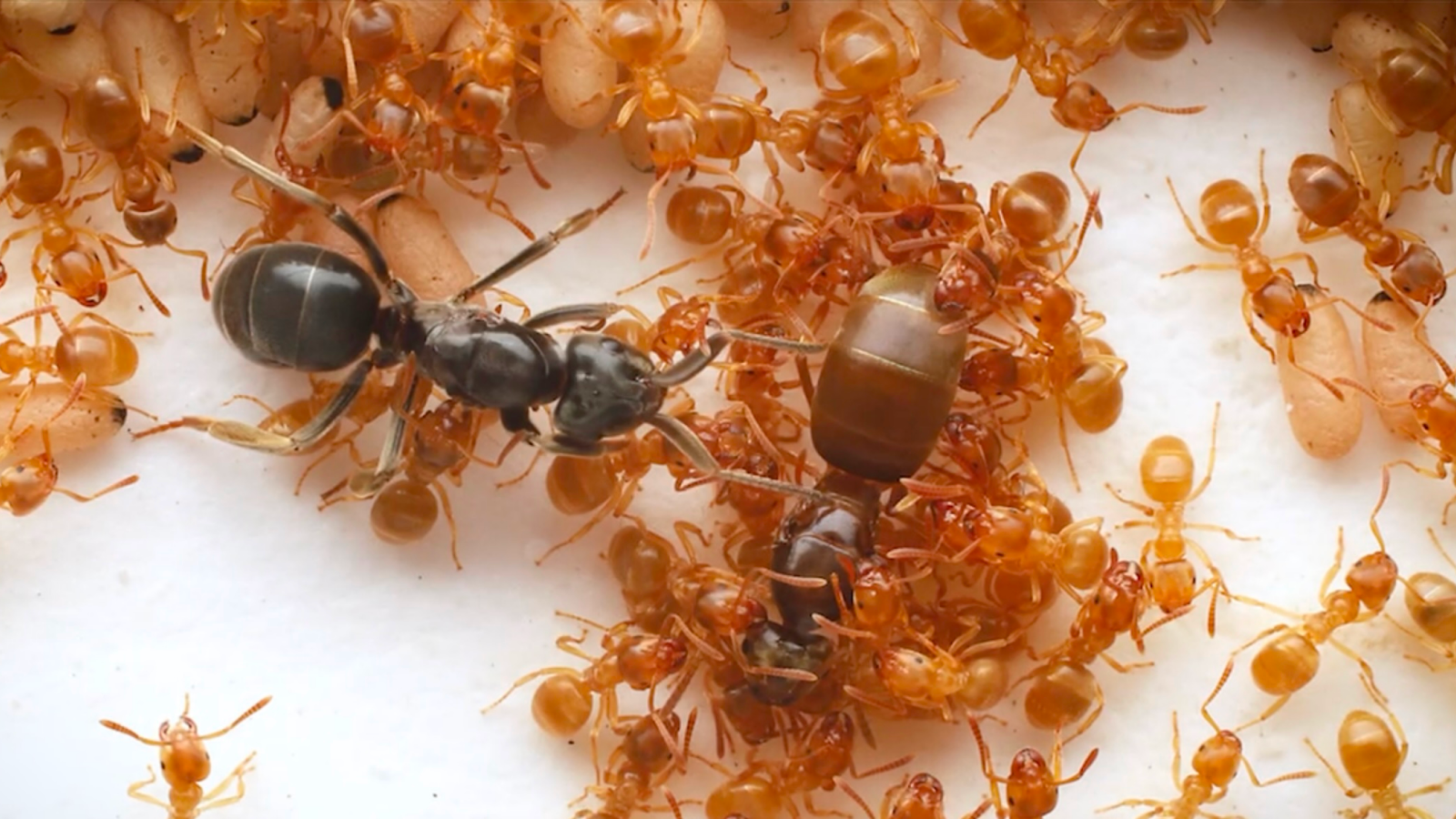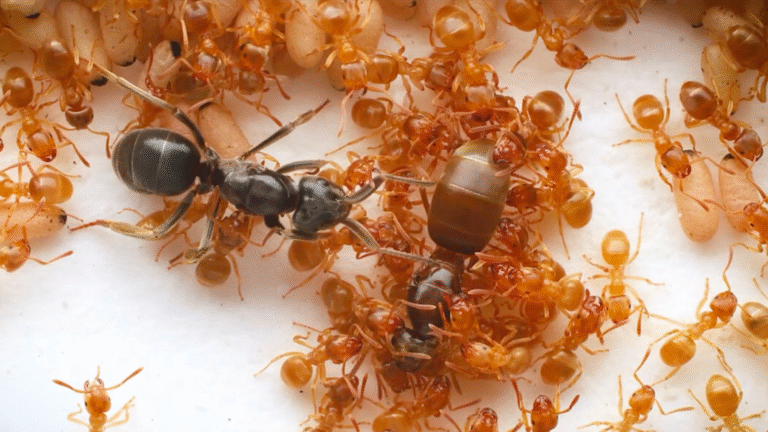Invading parasitic ant queens trick ant workers from different colonies into killing and dismembering their own mother, so the invader can step in and take the throne, according to a new study.
“The queen’s odour is wiped out by the formic acid, and in an instant the individual whom workers most urgently protect turns into a vicious menace. For the host queen and for the workers alike, it is nothing but a nightmare,” study lead author Keizo Takasuka, a biologist at Kyushu University in Japan, told Live Science in an email.
Some species of ants, such as Lasius orientalis and Lasius umbratus, operate as social parasites. Rather than starting their own colony from scratch, the queens from these species infiltrate the colonies of other species, such as Lasius flavus and Lasius japonicus, and take them over, making the workers serve them instead.
Scientists already knew that these invading queens use stolen scents to disguise themselves as a member of the colony. This works because ant vision is limited and the nest is dark, so workers rely heavily on odors for recognition and decision-making.
But they were still unsure how the invader convinced the worker daughters to kill their own mother. To investigate, Takasuka and his colleagues studied the ants’ behavior in the lab. The findings were published Monday (Nov. 17) in the journal Current Biology.
First, they put an invading queen with host workers and cocoons to make sure she acquired the right scent, Takasuka said.

This scent acquisition mimics what would happen in the wild, Daniel Kronauer at the Rockefeller University in New York, who wasn’t involved in the study, told Live Science. “You sometimes see these queens outside of the colonies of host species and they chew on host workers and groom themselves with the chemicals of the host workers, so they can acquire a kind of invisibility,” he said.
Next, the researchers introduced an L. orientalis queen into an L. flavus nest, and an L. umbratus queen into an L. japonicus nest.
The invading queens were largely accepted by the workers and made their way towards the host queens.
Each parasite queen sprayed the host queen with abdominal fluid then quickly retreated as the agitated workers turned on their own queen and attacked her. If the host queen survived the onslaught, the parasite queen returned to spray her again, until eventually the host queen was killed and dismembered by her own daughters.
The ants can spray formic acid, which has a sharp, vinegar-like smell, when threatened — and this is what Takasuka thinks they are spraying at the host queen.
“When they get attacked, ants often spray the intruder with formic acid as a way of alerting other ants in the colony,” Kronauer said. “So, it makes a lot of sense that this would be repurposed by the parasite queen. Basically, she’s telling them that the queen is an intruder by spraying her with formic acid, and that’s what triggers the attack.”
When the situation has calmed down, the parasitic queen begins laying eggs of her own and the workers take care of her and her offspring. At this point, the workers are constantly crawling over her, and she blends into the general smell of the colony, Kronauer said, “so, the parasite queen doesn’t have to keep killing workers and chewing on them.”
Eventually the old workers die out and the parasite queen has a brood that is all her offspring.
In some other parasitic ant species, the invader queen kills the incumbent herself. Matricide, or offspring killing their mother, is unusual in nature, and when it does happen it tends to be for the benefit of the species, like a hump earwig (Anechura harmandi) mother offering herself up as food for her nymphs, or wasps killing their queen in an effort to boost the diversity within the colony.
But in the case of these ants, only the parasite species profits. “It’s a manipulative behavior that is selfish from the perspective of the social parasite. And what the resident workers do is a very dumb, non-adaptive thing to do,” Kronauer said.


